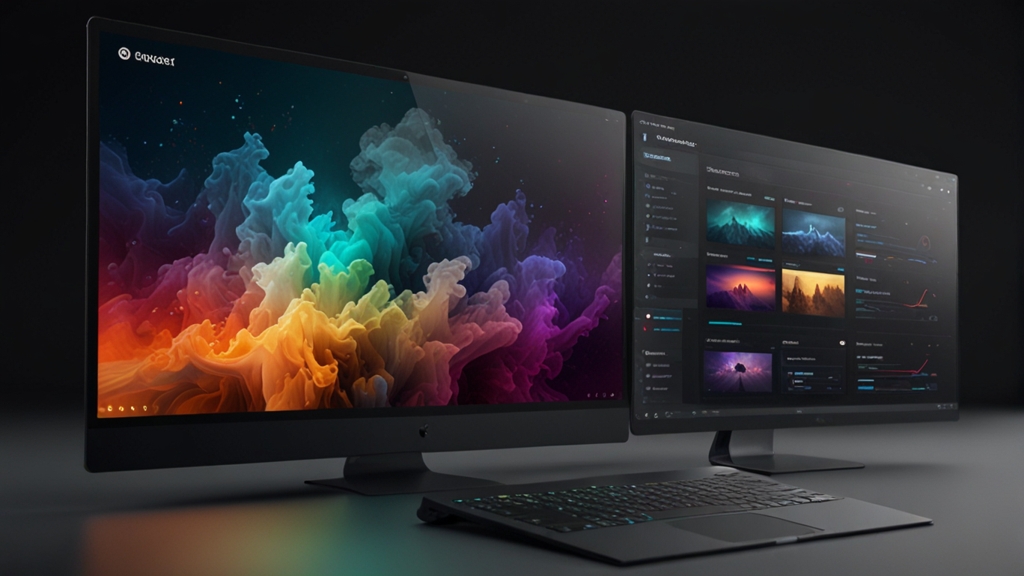Creating Stunning User Interfaces with Modern Front-End Frameworks
In the world of web development, the user interface (UI) serves as the bridge between users and your application. A well-designed UI can significantly enhance user experience and drive engagement. Modern front-end frameworks have revolutionized the way developers build UIs, offering robust tools and libraries to create visually stunning and highly functional designs.
Understanding Front-End Frameworks
Front-end frameworks are pre-written, standardized codes that provide a foundation for building the front-end of web applications. These frameworks come with a variety of components, libraries, and tools that facilitate efficient and effective UI development. Some of the most popular frameworks include React, Angular, and Vue.js.
"Modern front-end frameworks streamline the development process, enabling developers to focus on creativity and user experience rather than reinventing the wheel."
React: The Component-Based Approach
React, developed and maintained by Facebook, is a popular JavaScript library for building UIs. Its component-based architecture allows developers to create reusable UI components, leading to faster development and easier maintenance. The virtual DOM in React enhances performance by minimizing the need for full page reloads and directly updating only those components where changes occur.
One of the key features of React is JSX (JavaScript XML), which allows developers to write HTML elements in JavaScript. This seamless integration of JavaScript and HTML makes React an excellent choice for complex and dynamic user interfaces.
Angular: A Comprehensive Framework
Angular is a platform and framework for building single-page client applications using HTML and TypeScript. Developed by Google, Angular offers a highly structured and modular approach to UIs. Its two-way data binding ensures that changes in the model are instantly reflected in the view, and vice versa.
Angular stands out with its robust dependency injection system, which makes it easier to manage different services and components. Additionally, Angular's extensive tooling and development capabilities, including the Angular CLI (Command Line Interface), streamline the development process and boost productivity.
Vue.js: The Progressive Framework
Vue.js has gained significant popularity for its simplicity and flexibility. Designed to be incrementally adoptable, Vue can function as a standalone library for building UIs or scale up to a fully-featured front-end framework. Vue's reactive data binding system and component-based architecture make it an excellent choice for both small-scale and large-scale applications.
"Vue.js strikes a balance between the opinionated Angular and the minimalistic React, offering a gentle learning curve without sacrificing powerful features."
Benefits of Using Modern Front-End Frameworks
The adoption of modern front-end frameworks brings several advantages:
- Efficiency: Frameworks come with pre-built components and libraries, which significantly reduce the amount of code developers need to write from scratch.
- Consistency: Front-end frameworks promote consistency across applications by providing standard guidelines and best practices.
- Maintainability: Component-based architectures allow developers to write modular and reusable code, making it easier to maintain and update applications over time.
- Community Support: Popular frameworks have vibrant communities that contribute to a rich ecosystem of plugins, tools, and resources.
- Enhanced Performance: Features like virtual DOM, reactive binding, and advanced optimization techniques improve the performance of web applications.
"The rise of modern front-end frameworks has empowered developers to build more interactive, dynamic, and visually appealing web applications than ever before."
Conclusion
In conclusion, modern front-end frameworks like React, Angular, and Vue.js have transformed the landscape of web development. By offering powerful tools and efficient methodologies, these frameworks enable developers to create user interfaces that are not only aesthetically pleasing but also highly functional and performant. As the web continues to evolve, mastering these frameworks will be essential for developers aspiring to build the next generation of user experiences.








